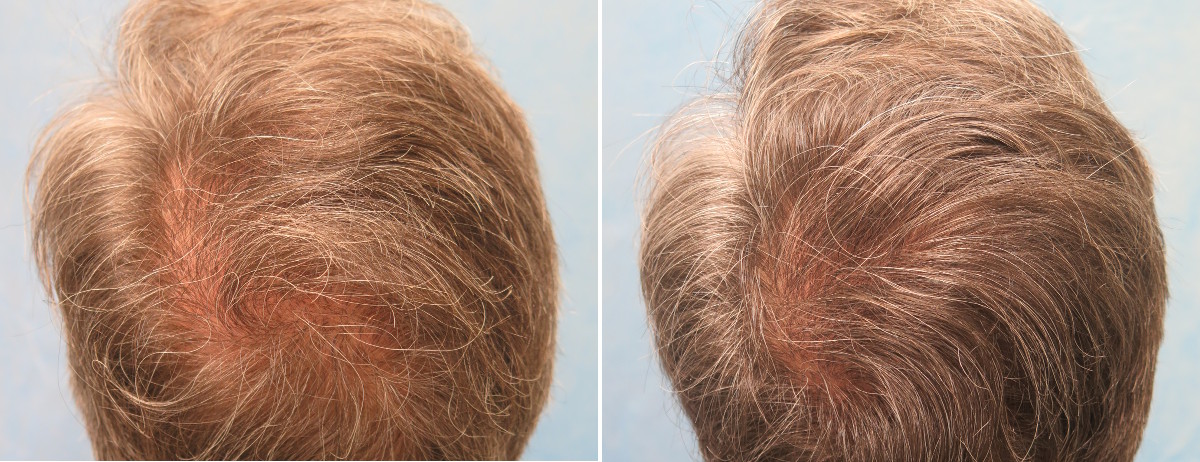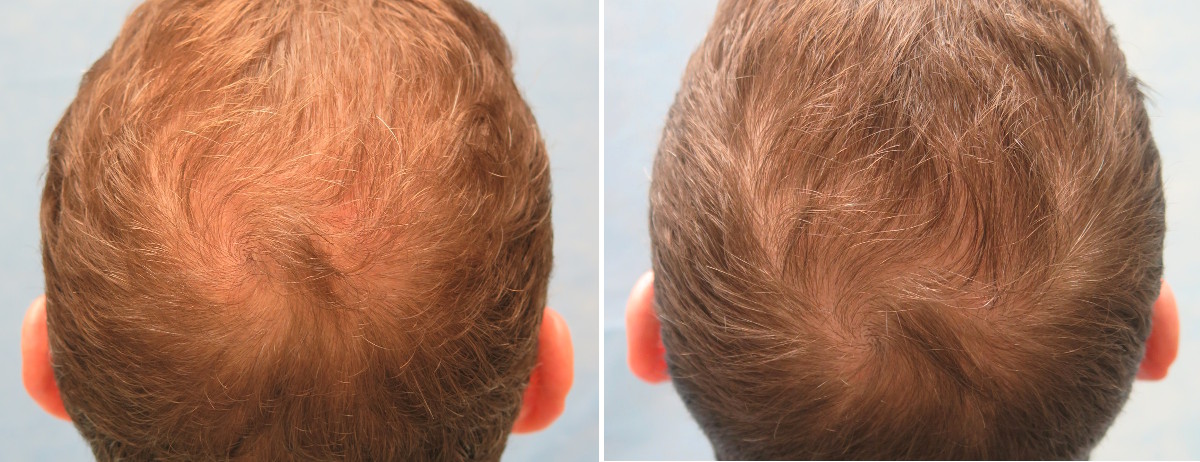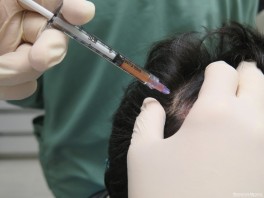What is PRP?



Platelet rich plasma (PRP) is concentrated blood plasma which contains approximately three to five times the number of platelets found in normal circulating blood. In addition, it contains platelet derived growth factor (PDGF), vascular endothelial growth factor (VEGF), transforming growth factor (TGF) and other bioactive proteins that aid in wound healing and possibly hair growth.
Growth factors in platelet rich plasma (PRP) have been used to facilitate wound healing. Recently, studies have suggested that PRP may also serve as a safe and effective treatment option for male and female pattern hair loss.
Human blood is comprised primarily of red blood cells (RBC), as well as white blood cells (WBC), platelets, and plasma. By initiating the first step of coagulation, platelets are the key to the body’s ability to heal wounds. It is thought that by increasing the platelet count in a wounded area, the body’s healing to that area would be accelerated – explaining the use of PRP in wound healing. Its effects on promoting hair growth make it useful for the medical treatment of hair loss.
PRP Treatments at Aizaz Hair Transplant
At Aizaz Hair Transplant we use the Emcyte Pure PRP System. This is a “double-centrifuge” technique that allows the active biologic factors of serum to be administered at the most effective concentration. This double processing is the only way that the optimal concentration of growth factors in PRP can be achieved.
If PRP hair loss therapy is appropriate, we can begin your treatment at the time of your consultation. We will administer the next two treatments at 6 week intervals. You will be asked to return 3 months later. At this visit (6 months from your first treatment) your response will be assessed. If you show improvement, follow up treatments will be given twice yearly depending upon your progress.
The treatments are administered by a Aizaz Hair Transplant physician and take about a half hour to 45 minutes. For some patients, the injections may be uncomfortable. For those patients we offer local anesthesia prior to the injections which helps to reduce the discomfort. Patients are monitored photographically to assess the benefits of therapy. We will modify your treatment schedule based on your individual response to therapy. The physicians at Aizaz Hair Transplant have the knowledge to know when PRP for hair loss is appropriate and the skill to inject the proper quantity of PRP at just the right depth to achieve the desired result — a skill that cannot be overstated.
PRP for Hair Loss

 The Platelet Rich Plasma (PRP) commonly used in hair restoration is “autologous,” meaning that it is derived from the patient’s own blood. To obtain PRP, a patient’s blood is spun in a centrifuge to separate the solid from liquid components and platelet activators, such as thrombin, calcium chloride and sometimes collagen, are added. The separated “solid” portion of the blood is PRP (platelet rich plasma).
The Platelet Rich Plasma (PRP) commonly used in hair restoration is “autologous,” meaning that it is derived from the patient’s own blood. To obtain PRP, a patient’s blood is spun in a centrifuge to separate the solid from liquid components and platelet activators, such as thrombin, calcium chloride and sometimes collagen, are added. The separated “solid” portion of the blood is PRP (platelet rich plasma).
There are commercially available systems for PRP hair loss treatment. These include: Cydomedix, Emcyte Pure PRP, Angel system, and Harvest system. PRP is sometimes combined with A-Cell, although the benefit of this combination is speculative.
PRP is then placed into a syringe and reintroduced into the treatment site i.e., either the surgical site or an area of hair loss. PRP be can sprayed onto a recipient area during and after a hair transplant, laid into the donor incision, or injected directly into a balding scalp. Prior to injecting PRP, doctors often create a ring-block of local anesthesia with 1% lidocaine.
When used to stimulate hair growth most doctors schedule injections at intervals of 1 to 9 months. Some improvement (in reversing miniaturization) can be expected in the first 2-6 months. The treatments must be continued periodically to maintain any improvement.
Mechanism of Action
For the medical treatment of hair loss, practitioners use PRP to stimulate the growth of follicles, thereby reversing the hair miniaturization seen in androgenetic alopecia (common baldness).
It is conjectured that the introduction of platelets and white blood cells through platelet rich plasma (PRP) can amplify the body’s naturally-occurring wound healing mechanism. It is also proposed that PRP can actually stimulate the stem cells (dermal papilla) of the newly transplanted hair follicles. Other doctors feel that during a hair transplant procedure, the body’s normal production of bioactive growth factors are optimal for healing and subsequent growth and that PRP for hair loss gives no additional benefit.
What are the Indications for PRP for Hair Loss?
PRP is used in many areas of medicine, including the acceleration of healing of tendon injuries, the treatment of osteoarthritis, in some aspects of dental work (i.e. jaw reconstruction), and in cardiovascular medicine. The concentrated form of plasma has been shown to accelerate wound healing and tissue repair and, thus, could potentially benefit hair restoration procedures.
In hair transplantation, PRP can be injected into or sprayed on the recipient site area to, theoretically, stimulate the healing of the transplanted grafts and into the donor area to facilitate healing of the donor incision and potentially minimize scar formation.
In the medical treatment of male and female pattern baldness (androgenetic alopecia), PRP can be injected into the balding scalp to potentially stimulate thin (miniaturized) hair to grow into thicker (terminal) hairs. Patients with thinning, but not totally bald, areas would be the best candidates.
